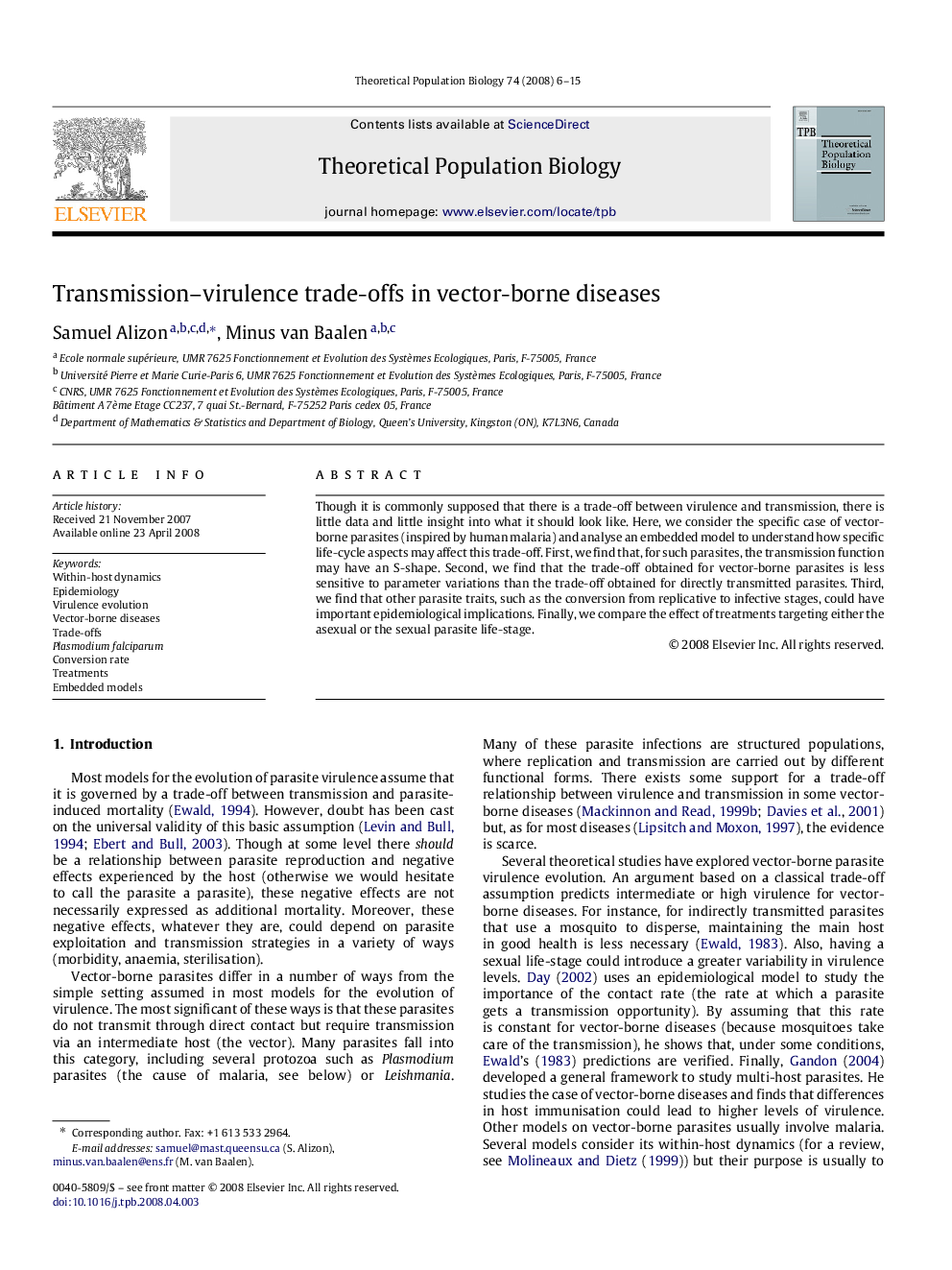| Article ID | Journal | Published Year | Pages | File Type |
|---|---|---|---|---|
| 4502952 | Theoretical Population Biology | 2008 | 10 Pages |
Though it is commonly supposed that there is a trade-off between virulence and transmission, there is little data and little insight into what it should look like. Here, we consider the specific case of vector-borne parasites (inspired by human malaria) and analyse an embedded model to understand how specific life-cycle aspects may affect this trade-off. First, we find that, for such parasites, the transmission function may have an S-shape. Second, we find that the trade-off obtained for vector-borne parasites is less sensitive to parameter variations than the trade-off obtained for directly transmitted parasites. Third, we find that other parasite traits, such as the conversion from replicative to infective stages, could have important epidemiological implications. Finally, we compare the effect of treatments targeting either the asexual or the sexual parasite life-stage.
